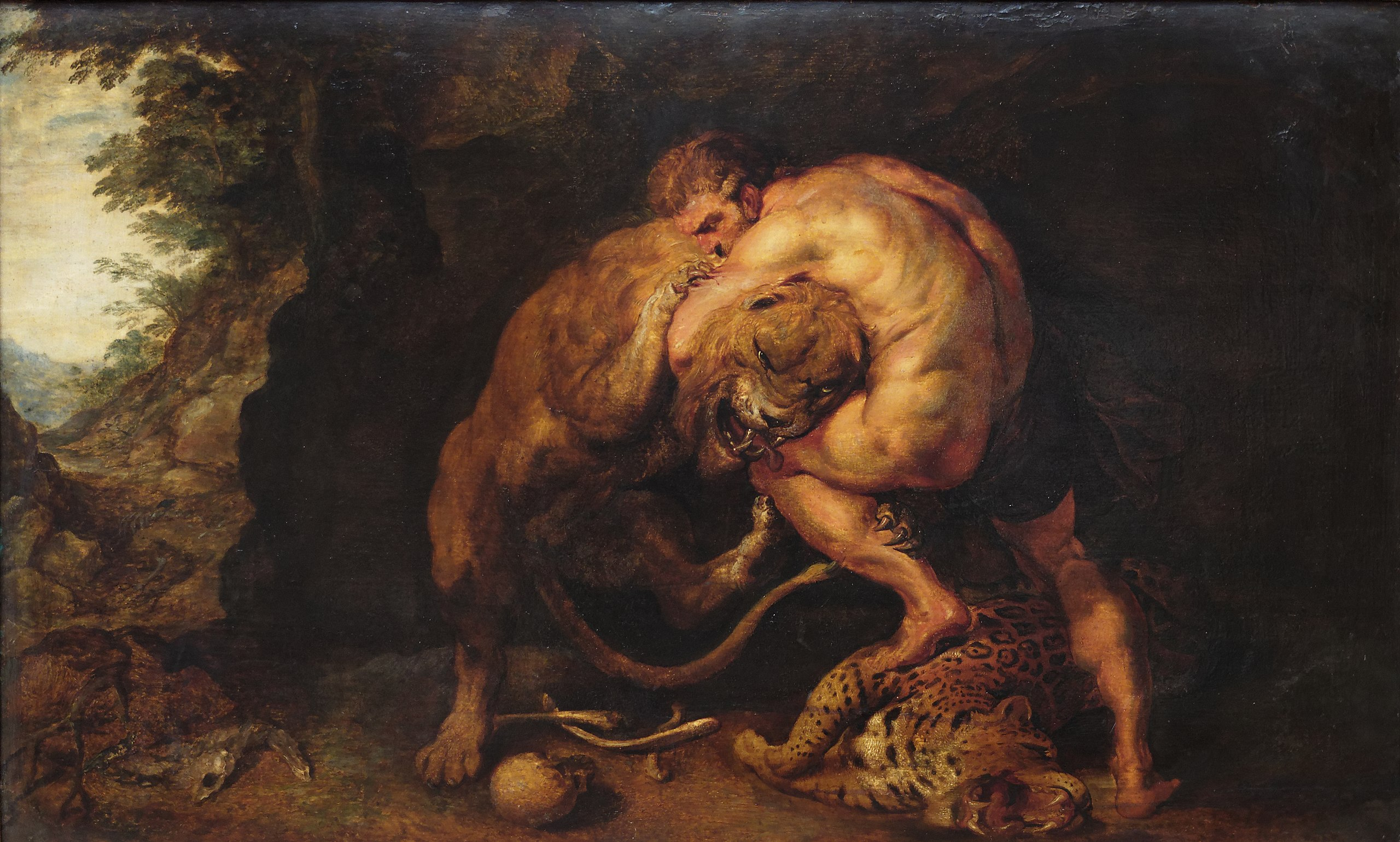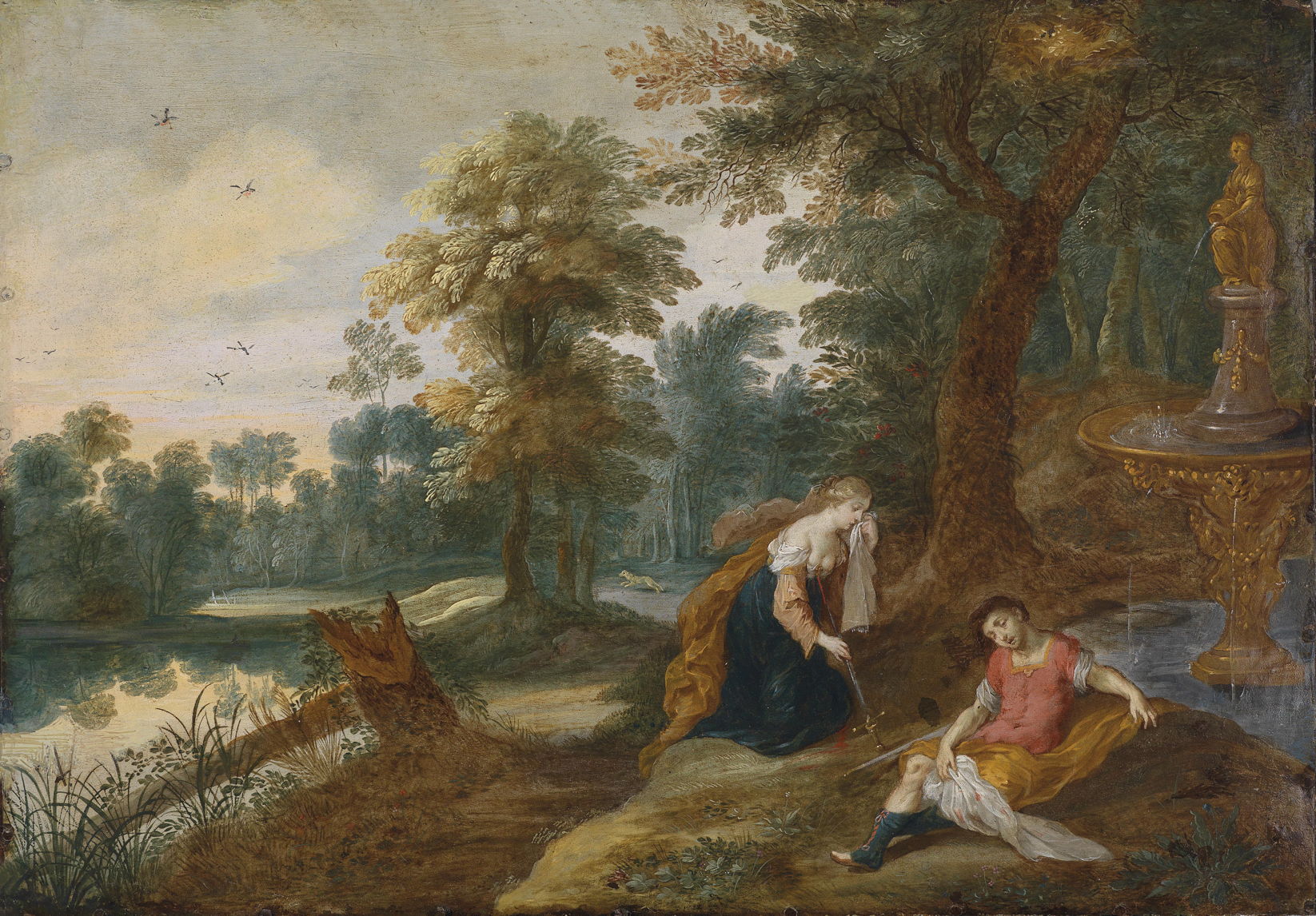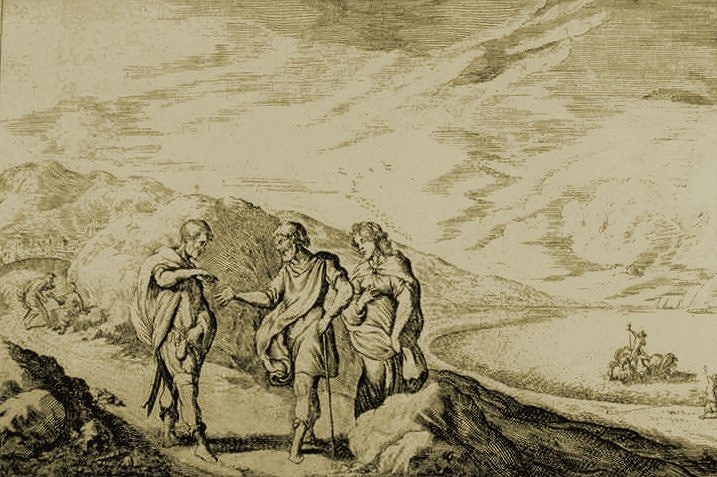AI-generated article summary
In the rich tapestry of Greek mythology, the story of Theseus and the Minotaur is a memorable story that combines adventure, love, and tragedy. This tale, passed down through generations, circles around the heroic exploits of Theseus, the prince of Athens, his battle with the monstrous Minotaur, and the labyrinthine complexities of fate and divine interference.
The myth introduces us to four central characters: Theseus, the bold Athenian prince; King Minos of Crete, who demands grievous tributes from Athens; Ariadne, Minos’ daughter who falls deeply in love with Theseus; and the Minotaur, a monstrous creature who lurks in the shadows of a complex labyrinth.
The Prophecy and the Curse
The tale of the Minotaur begins with King Minos of Crete. Minos, in his ambition to secure his dominion over Crete, sought the favor of the sea god Poseidon. He promised to sacrifice Poseidon’s magnificent white bull as a symbol of his submission and devotion. However, blinded by the beauty and grandeur of the bull, Minos broke his vow and sacrificed an ordinary bull instead.
Poseidon, infuriated by this display of arrogance and deceit, decided to punish Minos. He made Pasiphaë, Minos’s wife, fall in love with the white bull. From this unnatural union was born the Minotaur, a monstrous creature with the body of a man and the head of a bull. The Minotaur was a living curse, a constant reminder of Minos’ hubris and his failed promise to Poseidon.
To hide this monstrous shame, Minos commissioned the legendary craftsman Daedalus to construct a labyrinth, a maze so complex that no one who entered could ever find their way out. Within this dark and convoluted Labyrinth, the Minotaur was imprisoned, forever hidden from the world, yet a constant symbol of Minos’ disgrace.
Within this narrative, there exists another tale. This is the story of Daedalus and his son Icarus, who dared to venture into the labyrinth and sought to escape its confines. Discover the captivating account of their daring escape and the tragic fate of Icarus in the Daedalus And Icarus Story.
The Tribute to the Minotaur
The curse of the Minotaur was not confined to the palace of Minos. It extended its dark shadows over the seas, reaching the city of Athens. During a conflict between Crete and Athens, Minos’ son Androgeos journeyed to Athens and was killed. As a punishment and a symbol of dominance, Minos demanded a chilling tribute from the Athenians. Every seven years, seven young men and seven young women were to be sent to Crete to be devoured by the monstrous Minotaur, an embodiment of Minos’ wrath and a symbol of Athenian subjugation.
Among the Athenians, a brave prince named Theseus, son of King Aegeus, decided to challenge this cruel tribute. Theseus was an archetype of bravery and strength, a young hero who had already proven his mettle by overcoming numerous challenges and obstacles. But the Minotaur was a foe unlike any he had faced before. Regardless, Theseus was determined to end the tributes and the sorrow they brought to his city. He vowed to slay the Minotaur and volunteered to be one of the seven young men to sail to Crete on the ominous ship of black sails.
This decision marked the beginning of Theseus’ great adventure. It was a journey fraught with danger and uncertainty, but it was a path that Theseus chose willingly. For him, the lives of his people were worth more than his own, and he was prepared to face the Minotaur, the monstrous embodiment of Minos’ curse.
Theseus in Crete
Upon the somber ship’s arrival in Crete, the tragic tributes were presented to King Minos. Among the crowd, one figure stood out: Theseus, the Athenian prince, whose determination and courage were as clear as the Aegean sun. His resolve did not go unnoticed. Ariadne, King Minos’ daughter, was captivated by this heroic Athenian. She was struck by his bravery, his willingness to face certain death to save his city.
Ariadne, trapped in her own kind of labyrinth within the palace of Minos, found her heart drawn to Theseus. She saw in him a chance for escape, a chance for change. She decided to help Theseus, giving him a ball of thread, known as the ‘clew.’ This was no ordinary thread, but a magical one given to her by Daedalus, the architect of the labyrinth. Theseus was instructed to unravel the thread as he ventured deep into the labyrinth, thereby marking his path, a lifeline back to the world outside the beast’s lair.
This moment was a turning point in the myth, a beacon of hope in the tragic narrative. Theseus, with Ariadne’s aid, now had a fighting chance against the monstrous Minotaur and the deceptive labyrinth. The Athenian prince, armed with his sword and the magical thread, was ready to face the challenge that lay ahead, to confront the beast in the heart of the maze.
The Battle with the Minotaur
With the magical thread as his guide and a sturdy sword in hand, Theseus entered the dark, winding labyrinth. The labyrinth, a dark reflection of King Minos’ deceit, was as formidable a foe as the beast it housed. Its winding paths and dead ends were designed to confuse and disorient, but Theseus, guided by Ariadne’s thread, navigated the maze with unwavering determination.
Deep within the heart of the labyrinth, Theseus came face to face with the Minotaur. The creature was a terrifying sight, a grotesque blend of man and beast, a living testament to Minos’ broken promise to Poseidon. The air was thick with tension as man and monster locked eyes, each recognizing the other as the key to their freedom.
The battle that ensued was fierce. Theseus, relying on his strength and agility, managed to evade the Minotaur’s attacks. He struck when opportunities presented themselves, wearing the beast down. Finally, with a swift and decisive blow, Theseus drove his sword into the Minotaur, ending the creature’s reign of terror.
As the Minotaur fell, silence reclaimed the labyrinth. Theseus, despite his exhaustion, did not pause. He followed the thread that had guided him through the labyrinth, retracing his steps back towards the world above. Theseus had accomplished what no other could—he had slain the Minotaur, bringing an end to the dreaded cycle of tributes. His victory, however, was not his alone. It was a testament to the power of courage, the strength of resolve, and the guiding light of love that Ariadne had provided.
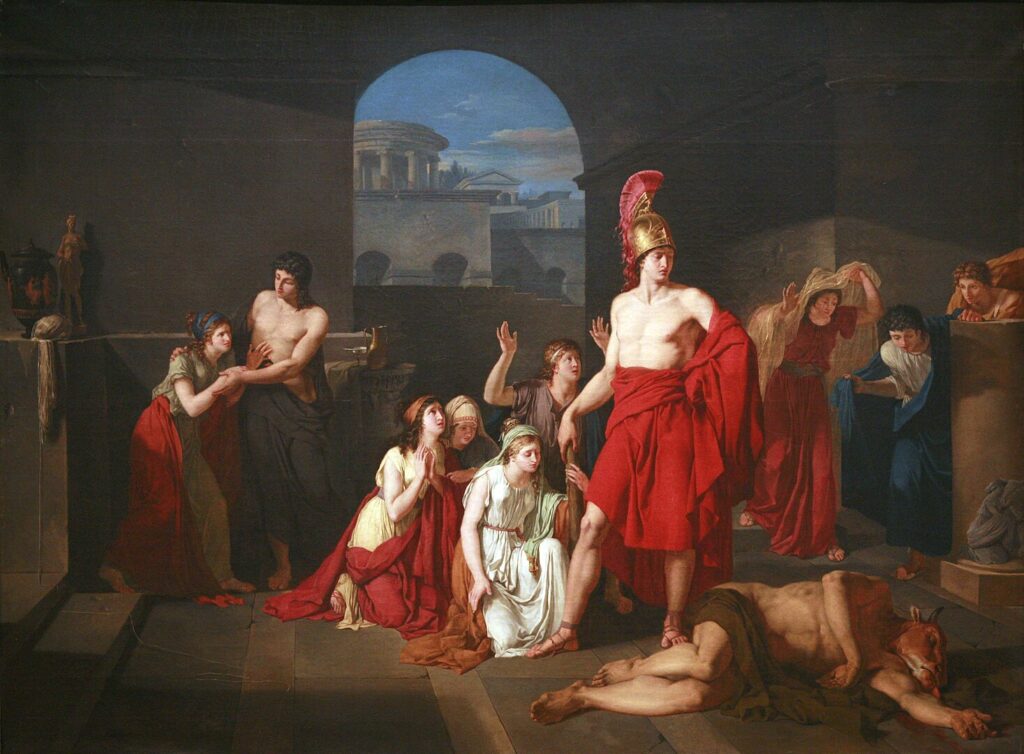
The Escape from Crete
With the Minotaur defeated, Theseus retraced his steps through the labyrinth, guided by the unbroken line of Ariadne’s thread. Emerging from the dark maze into the light of day, he was greeted not as a mere tribute, but as a victorious hero. But the time for celebration was not yet upon him. He had a promise to keep, a promise to return to Athens, and a newfound one to Ariadne.
Ariadne had played a crucial role in Theseus’ victory. Her brave decision to help Theseus had turned the tide in his favor. In gratitude for her invaluable help, and moved by her bravery and compassion, Theseus promised to take Ariadne with him back to Athens.
Under the cover of night, Theseus, Ariadne, and the other Athenians who had been sent as tributes, escape from the palace. They boarded the ship that had brought them to Crete, the black sails still raised, and set off towards Athens.
However, the journey did not proceed as one might expect. Theseus, for reasons that remain a matter of numerous interpretations and debates—some suggest he was instructed by the gods, others that he simply fell out of love—abandoned Ariadne on the island of Naxos. This act of abandonment adds a layer of tragedy to the narrative, tinging Theseus’ victory with a shadow of betrayal and sorrow.
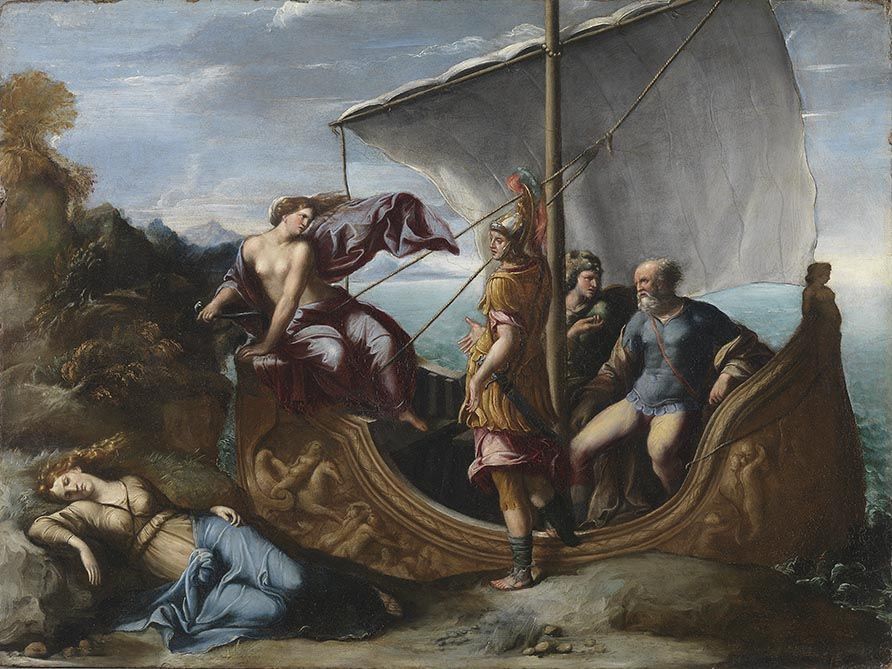
While the narrative may cast Theseus in a harsh light, it’s crucial to remember that myths often serve as mirrors, reflecting the complexities and contradictions inherent in human nature. Theseus, despite being a hero, was not without flaws, and his actions remind us of this crucial fact.
The Return to Athens
After the dramatic escape from Crete and the tragic abandonment of Ariadne, Theseus and the remaining Athenians continued their journey back to Athens. As they neared their homeland, overcome by various emotions and exhausted from their ordeal, they forgot to change the ship’s black sails to white. This was a prearranged signal between Theseus and his father King Aegeus, a sign that would indicate Theseus’ survival and victory.
King Aegeus, anxiously awaiting the return of his son, watched the horizon day after day. When he saw the ship approach with its black sails, he assumed the worst: that his beloved son had succumbed to the Minotaur. Stricken with grief, he threw himself into the sea, which to this day is named the Aegean Sea in his memory.
Upon arriving in Athens, Theseus was met with a bittersweet victory. He was hailed as a hero, the one who had freed Athens from the cruel tributes to Crete, but his triumph was marred by the tragic death of his father. Theseus, blaming himself for his father’s death, became a somber figure, a hero who had saved his city but could not save his own father.
In the days that followed, Theseus became the king of Athens. His rule was marked by many reforms and he was remembered as a fair and wise king. Despite the tragedies and trials he had faced, Theseus proved to be a resilient leader, a testament to his indomitable spirit and unwavering resolve.
The Moral of the Myth of Theseus and the Minotaur
Now, as we reach the end of the tale, it’s time to reflect upon the lessons it imparts. The myth of Theseus and the Minotaur, like all myths, serves not only as a captivating narrative but also as a vessel for profound wisdom and insight.
Firstly, the story underscores the importance of bravery and self-sacrifice. Theseus, despite knowing the odds stacked against him, chose to face the Minotaur to end the suffering of his city. His courage and willingness to risk his life for the welfare of others serve as a powerful reminder of the nobility that can reside within the human spirit.
The narrative also explores the themes of deceit and its consequences. King Minos’ deceit of Poseidon led to the birth of the Minotaur, a curse that terrorized Crete and Athens. Similarly, Theseus’ forgetfulness or neglect in changing the sails of his ship resulted in a tragic misunderstanding and his father’s death. These incidents in the narrative convey the message that actions have consequences, often far-reaching and unintended.
Finally, the story highlights the power of love and compassion. Ariadne, moved by Theseus’ determination, chose to help him despite the risk to her own life. Her compassion played a critical role in Theseus’ victory, reminding us that kindness and love can indeed conquer even the most formidable challenges.
Therefore, the myth of Theseus and the Minotaur is not simply a tale of heroes and monsters, but a narrative rich with lessons on courage, the repercussions of deceit, and the transformative power of love and compassion. It serves as a timeless reminder of these values and the complex tapestry of the human experience.


